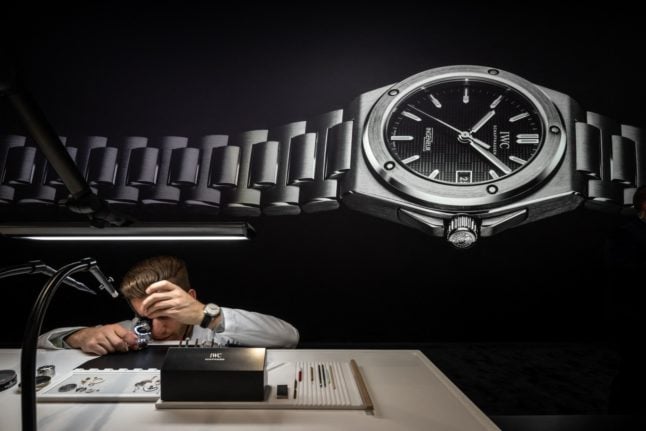Translating to Santa chase or Santa hunt, the festival takes place on the night before St Nikolaus’ Day – December 5th – each year, where a dark and solemn parade weaves its way through the streets of the village of Küssnacht.
Although these days Santa is less ‘chased’ and more ‘followed slowly and morbidly by local villagers toting rudimentary musical instruments’, the tradition did originate from a hot-footed pursuit of Santa through the city streets by local youth.
Previously banned by Christian authorities, the Klausjagen is now one of Switzerland’s most celebrated festivals – attracting upwards of 20,000 people a year to Küssnacht and its surrounds.
Dark Küssnacht of the Soul
Locals and tourists start gathering at around 6pm on the 5th of December to drink Glühwein and stake out good spots to catch a glimpse of the parade.
Klausjagen usually begins at 8:15pm, where the entire city shuts off its lights and plunges itself into darkness.
From there, local farmers herd the parade through the streets with whips, cracked in perfect unison. But these aren’t novelty toys, they are real whips which crack like fireworks.
Iffelen, Samichlaus, Trychler, Geisslechlöpfer und Klausjäger – erlebe morgen traditionelles Brauchtum am #Klausjagen Küssnacht! https://t.co/9bcEXxpg14 pic.twitter.com/FZMCoFOjZi
— Lucerne Tourism (@ilovelucerne) December 4, 2017
Wearing a stained glass-style hat known as an Iffelen, the participants walk through the streets in white robes to clear the way for Santa.
Cometh the hour, cometh the Claus
Next comes Santa, who is flanked by four attendants – known as Schmutzlis – in black robes and questionable face paint, carrying sacks and towing donkeys while also handing out pastries to a watching crowd.
More cowbell
Up next is three waves of noise, each of which are aimed at chasing out bad spirits. First comes a a marching band, repeating a short refrain endlessly, before a group follows them incessantly ringing cowbells.
The final wave of noise is a group of men who blow on cow horns.
From there, the dark shadow of the night is lifted, with locals and tourists alike venturing into local taverns and continuing to chase the bad spirits away until the wee hours.
The following video shows the children of the city – some with whips in hand – preparing for the night.
Childrens march! We start little pic.twitter.com/bIRr0JCyFV
— Klausjagen Küssnacht (@Klausjagen) December 5, 2019
From a ban to a centrepiece of Christmas celebrations
The origins of the tradition are believed to be in pagan festivals which involved chasing bad spirits out of local villages.
When Christian authorities became concerned about the festival and its impact, it was officially outlawed in 1732 – although despite attempts to stop it, it continued to flourish.
In the 1900s, the next move was to Christianise the festival, with the church encouraged religious representatives to appear.
The modern incarnation of the festival started as an attempt to pacify what had become a troubling local tradition – local kids and teenagers chasing St Nikolaus around the city.
Local authorities tried for a decade – from 1920 to 1928 – to convert the practice into something of cultural significance, and presumably to give Santa a chance to catch his breath.
In 1928, an association was founded – St. Nicholas Society of Küssnacht – which sought to preserve the Klausjagen as a cultural tradition, with the result being the very real Santa hunt was turned into something more ordered and civilised.
These days, the tradition has been well preserved, is one of the most popular in Switzerland and is well worth attending – provided you don’t mind a bit of cowbell.



 Please whitelist us to continue reading.
Please whitelist us to continue reading.
Member comments